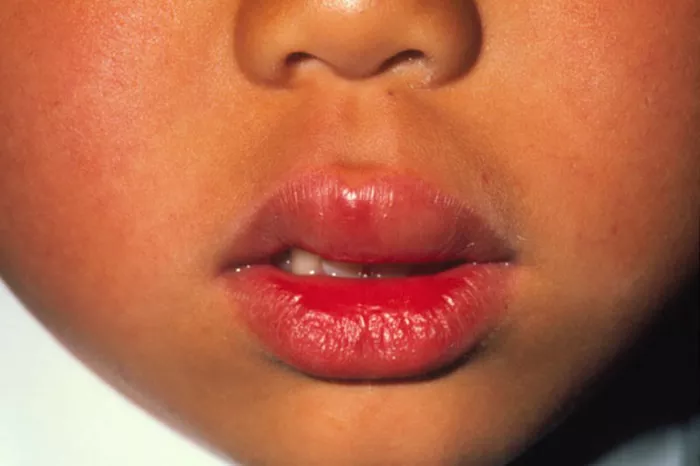Seasonal Allergic Rhinitis, commonly known as hay fever, is a prevalent allergic condition characterized by inflammation of the nasal passages in response to specific allergens present during certain times of the year. As one of the most common allergic disorders globally, seasonal allergic rhinitis affects millions of individuals, impacting their quality of life and overall well-being. In this comprehensive guide, we delve into the intricacies of seasonal allergic rhinitis, exploring its causes, symptoms, diagnosis, treatment, and management strategies.
Unraveling the Allergic Response: An Overview of Seasonal Allergic Rhinitis
Defining Seasonal Allergic Rhinitis
Seasonal Allergic Rhinitis, often referred to as hay fever, is an allergic reaction characterized by inflammation of the nasal passages in response to specific airborne allergens. These allergens typically include pollen from trees, grasses, and weeds, which are prevalent during certain seasons of the year, hence the term “seasonal” allergic rhinitis.
Understanding the Allergic Response
The allergic response in seasonal allergic rhinitis is triggered when the immune system mistakenly identifies harmless substances, such as pollen, as threats to the body. In response to exposure to these allergens, the immune system releases chemicals such as histamine, leading to inflammation of the nasal mucosa and the characteristic symptoms of allergic rhinitis.
Recognizing the Signs and Symptoms
Common Symptoms of Seasonal Allergic Rhinitis
Sneezing: Frequent and repetitive sneezing, often accompanied by nasal congestion.
Runny or Stuffy Nose: Excessive nasal discharge (rhinorrhea) or nasal congestion, leading to difficulty breathing through the nose.
Itchy Eyes, Nose, or Throat: Persistent itching sensation in the eyes, nose, throat, or roof of the mouth.
Watery Eyes: Excessive tearing or watery discharge from the eyes (allergic conjunctivitis).
Fatigue: Feeling tired or lethargic due to disrupted sleep patterns caused by nighttime symptoms.
Coughing: Dry coughing may occur as a result of postnasal drip or throat irritation.
Seasonal Allergic Rhinitis vs. Perennial Allergic Rhinitis
Distinguishing Between Seasonal and Perennial Allergic Rhinitis
While both seasonal and perennial allergic rhinitis share similar symptoms, they differ in their triggers and duration of symptoms. Seasonal allergic rhinitis is triggered by specific allergens present during particular seasons, such as pollen in the spring or fall. In contrast, perennial allergic rhinitis occurs year-round and is triggered by indoor allergens such as dust mites, pet dander, or mold.
Common Triggers of Perennial Allergic Rhinitis
Dust Mites: Microscopic insects that thrive in household dust, bedding, and upholstery.
Pet Dander: Allergens shed from the skin, fur, or feathers of pets such as cats, dogs, or birds.
Mold: Fungi that grow in damp or humid environments, including bathrooms, basements, and outdoor areas.
Diagnosis and Evaluation
Clinical Assessment
Diagnosing seasonal allergic rhinitis typically involves a comprehensive clinical assessment, including a detailed medical history, physical examination, and evaluation of symptoms. Healthcare providers may inquire about the timing and duration of symptoms, potential triggers, and their impact on daily activities and quality of life.
Allergy Testing
Allergy testing, such as skin prick testing or blood tests for specific IgE antibodies, may be conducted to identify allergens responsible for triggering allergic rhinitis symptoms. These tests help pinpoint the precise allergens to which an individual is sensitized, guiding personalized treatment strategies.
Treatment and Management Strategies
Allergen Avoidance
Minimizing exposure to allergens is a cornerstone of managing seasonal allergic rhinitis. Strategies for allergen avoidance may include:
Monitoring Pollen Counts: Staying informed about local pollen counts and limiting outdoor activities during peak pollen seasons.
Using Air Filters: Installing high-efficiency particulate air (HEPA) filters in indoor spaces to reduce allergen exposure.
Closing Windows and Doors: Keeping windows and doors closed during high pollen seasons to prevent outdoor allergens from entering indoor spaces.
Pharmacological Therapy
Pharmacological treatment options for seasonal allergic rhinitis aim to alleviate symptoms and reduce inflammation. These may include:
Antihistamines: Medications that block the action of histamine, reducing symptoms such as sneezing, itching, and runny nose.
Intranasal Corticosteroids: Nasal sprays containing corticosteroids that reduce inflammation in the nasal passages and alleviate symptoms of allergic rhinitis.
Decongestants: Oral or nasal decongestants that help relieve nasal congestion by constricting blood vessels in the nasal mucosa.
Immunotherapy
Immunotherapy, also known as allergy shots or sublingual immunotherapy (SLIT), may be recommended for individuals with severe or persistent allergic rhinitis symptoms that are not adequately controlled with other treatments. Immunotherapy involves gradually exposing the individual to increasing doses of allergens to desensitize the immune system and reduce allergic reactions over time.
Lifestyle Modifications and Home Remedies
Nasal Irrigation
Nasal irrigation with saline solutions can help rinse allergens from the nasal passages, relieve nasal congestion, and reduce inflammation. This can be done using a saline nasal spray, neti pot, or nasal irrigation bottle.
Steam Inhalation
Inhaling steam from a bowl of hot water or using a steam inhaler can help relieve nasal congestion, soothe irritated nasal passages, and promote sinus drainage. Adding essential oils such as eucalyptus or peppermint oil to the steam may provide additional benefits.
Maintaining Indoor Air Quality
Improving indoor air quality by reducing indoor allergens, such as dust mites, pet dander, and mold, can help minimize allergic rhinitis symptoms. This may involve regular cleaning, vacuuming with a HEPA filter, using allergen-proof mattress and pillow covers, and maintaining optimal humidity levels.
Conclusion: Navigating Seasonal Allergic Rhinitis with Knowledge and Care
Seasonal Allergic Rhinitis, though a common and often bothersome condition, can be effectively managed with a combination of allergen avoidance strategies, pharmacological treatments, immunotherapy, and lifestyle modifications. By understanding the triggers, symptoms, and treatment options for seasonal allergic rhinitis, individuals can take proactive steps to minimize symptoms, improve quality of life, and enjoy the changing seasons with greater comfort and ease. With knowledge, support, and access to appropriate care, navigating seasonal allergic rhinitis becomes a manageable journey towards symptom relief and overall well-being.
[inline_related_posts title=”You Might Be Interested In” title_align=”left” style=”list” number=”6″ align=”none” ids=”6197,6100,6092″ by=”categories” orderby=”rand” order=”DESC” hide_thumb=”no” thumb_right=”no” views=”no” date=”yes” grid_columns=”2″ post_type=”” tax=””]
































